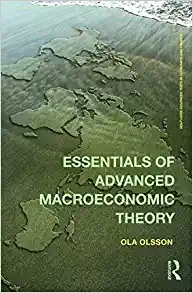Question
Q2. If income taxes are lowered, we can expect that the income velocity of money will a) Increase due to an increase in income and
Q2. If income taxes are lowered, we can expect that the income velocity of money will
a) Increase due to an increase in income and the interest rate
b) Decrease due to an increase in saving and money supply
c) Decrease since people will save more
d) Remain fairly stable since both income and prices will increase
e) Decrease since money supply will increase
Q3. If a central bank believes that an economic disturbance will negatively affect GDP in the current quarter but will have little permanent effect, then it should
a) Sharply lower interest rates immediately to mitigate the effects of the disturbance
b) Sharply lower interest rates immediately and let financial markets know that they will be raised again next quarter
c) Undertake large open market sales now with the intention of making open market purchases later on
d) Sit on its hands since any policy action would destabilize the economy further
e) None of the above
Q4. Which of the following might have caused the shift in aggregate supply shown in the diagram below? Tick all the answers that apply.
a) An improvement in technology
b) A depreciation of the exchange rate
c) An increase in costs
d) A reduction in government expenditure
e) A cut in income tax
f) An increase in wage levels
Q5. If we were in a liquidity trap,
a) Investment would be totally interest insensitive
b) Fiscal expansion would be unlikely to drive interest rates up
c) Monetary policy would be more powerful than fiscal policy
d) An increase in government spending would be totally offset by a decrease in private investment
e) Crowding out would be made worse by the inability of monetary policy to accommodate fiscal policy
Q6. Which of the following is NOT included as investment in the national income accounts?
a) Investment in human capital
b) Investment in new knowledge
c) Government investment in a country's infrastructure
d) Financial investment (the buying of stocks and bonds)
e) All of the above
Q7. If we compare the effects on aggregate demand of a temporary investment tax credit for firms and a temporary income tax cut for households, we realize that
a) A temporary income tax cut is more effective since consumption is a larger portion of aggregate demand than investment
b) Neither one will change aggregate demand significantly since in both cases permanent rather than current income is important
c) Both will change aggregate demand significantly since individuals as well as firms want to take advantage of lower taxes while they can
d) The personal income tax cut will increase aggregate demand while the higher tax credit will lower aggregate demand
e) Temporary investment tax credits will help to simulate aggregate demand but temporary income tax cuts most likely will not
Q8. Which of the following would cause the shift in aggregate demand shown in the diagram below?
a) The government/RBI increase interest rates
b) Ms. Nirmala Sitharaman increases tax-free allowances in her budget
c) The rate of GST is increased
d) Controls on the level of bank lending are relaxed
e) The government allows tax relief on R&D spending
f) The rate of income tax is reduced Part II: Analytical
Step by Step Solution
There are 3 Steps involved in it
Step: 1

Get Instant Access to Expert-Tailored Solutions
See step-by-step solutions with expert insights and AI powered tools for academic success
Step: 2

Step: 3

Ace Your Homework with AI
Get the answers you need in no time with our AI-driven, step-by-step assistance
Get Started


